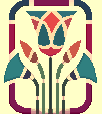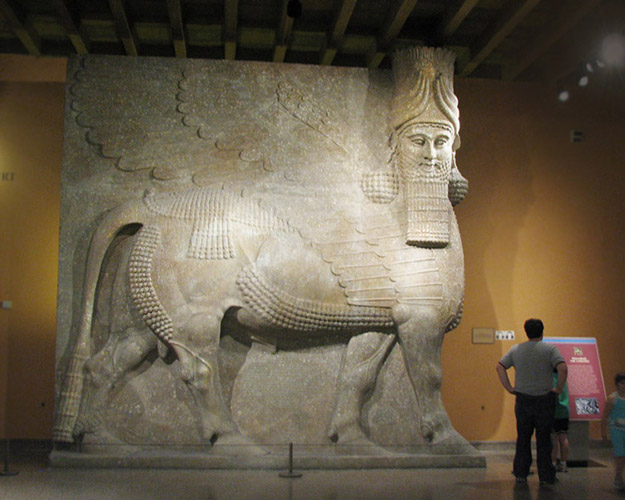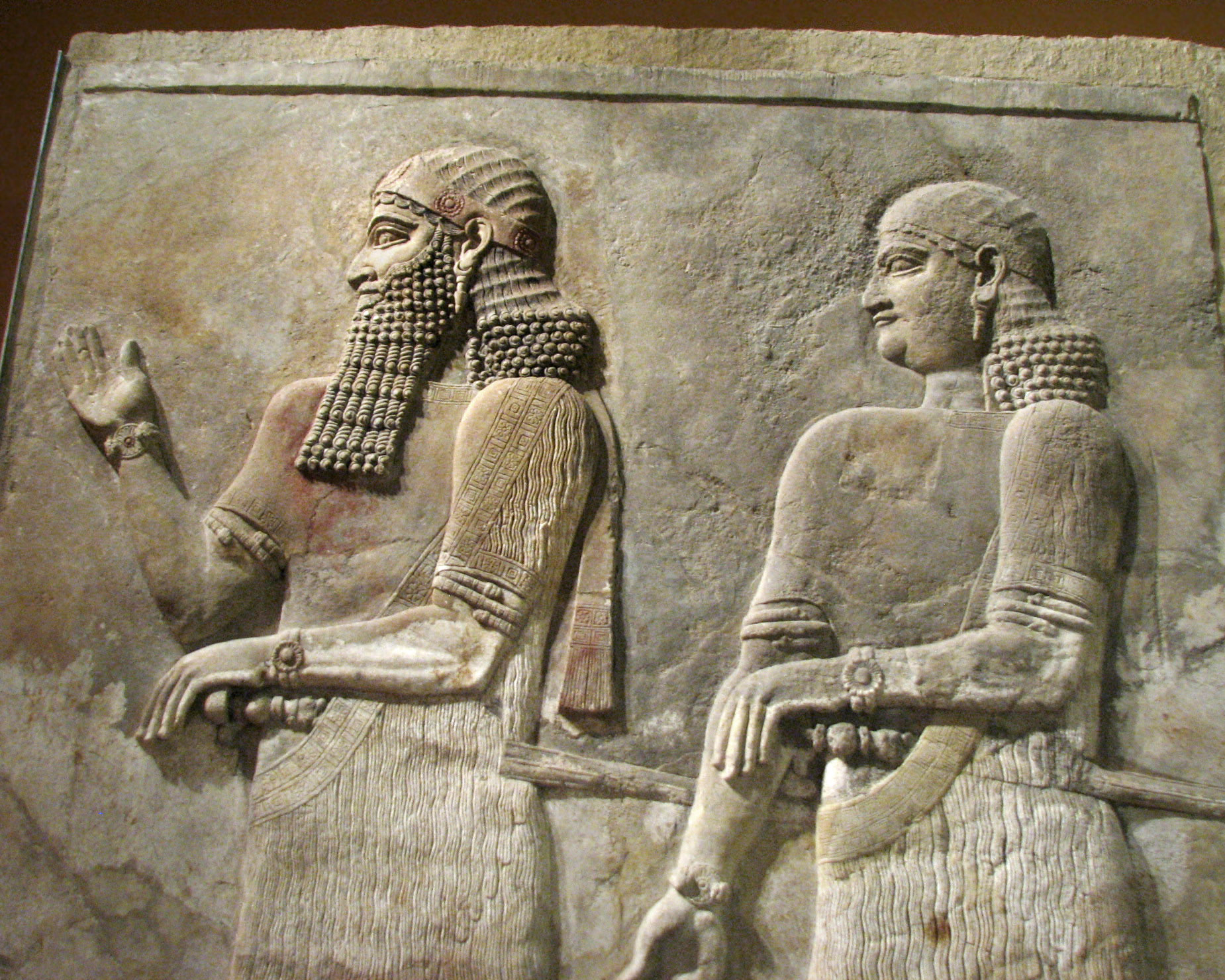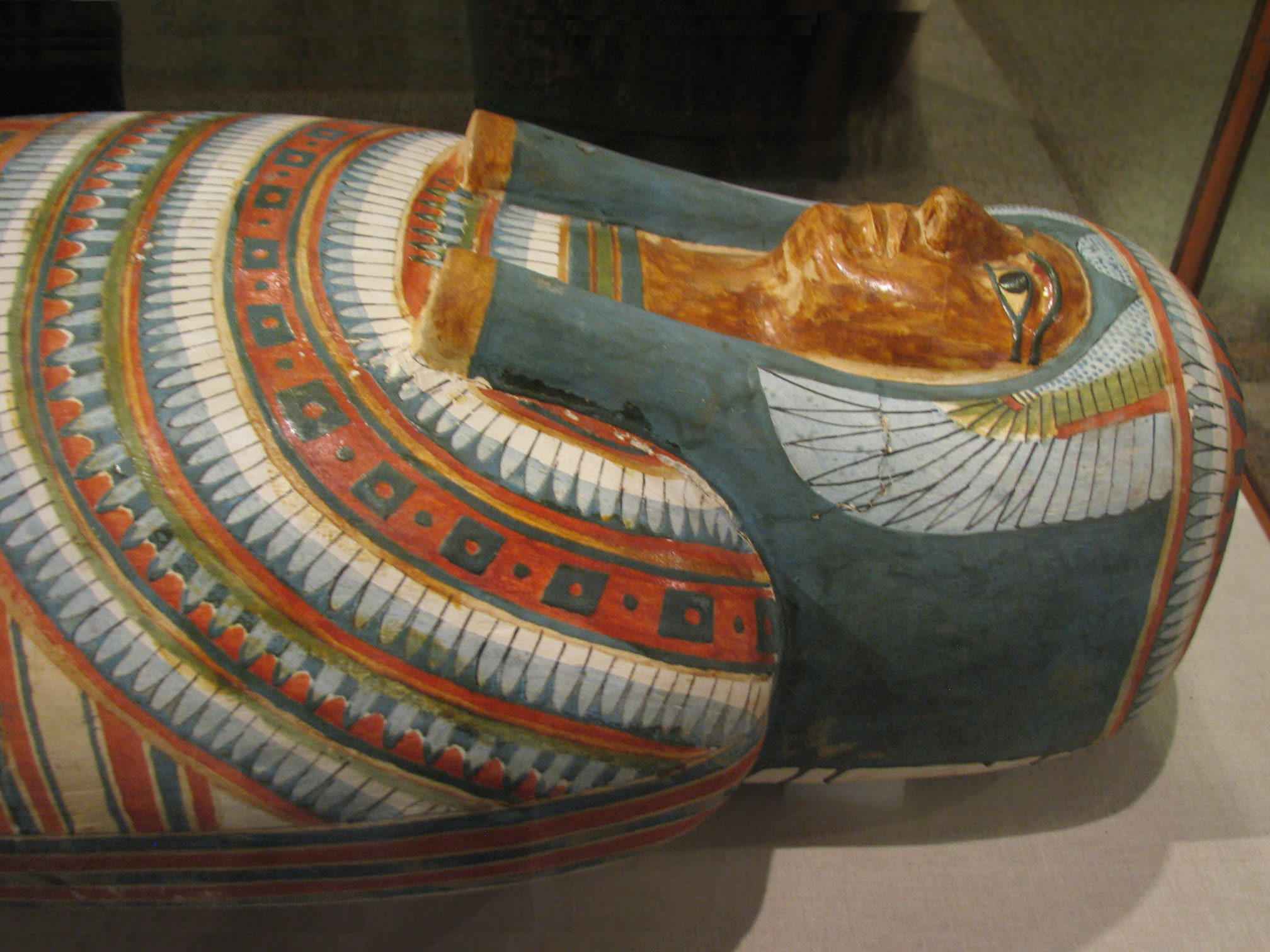
Sunday, August 1, 2010
"Memorable Treasures at Oriental Museum"
8:51pm

Sunday, August 1, 2010
"Memorable Treasures at Oriental Museum"
8:51pm
| Sleepy, so sleepy, but I want to savor the memories at Oriental Museum. The Big Bull, forty tons of him, is of course the most memorable thing. The museum website fails to convey its massiveness. Mine may not, either: |
 Reign of Sargon II, 721-705 BCE Gypsum (?), 493.3cm H, 491.4cm W Excavated by the Oriental Institute, 1929, OIM A7369  |
|
The other huge item, the tall Tutankhamun statue, has a controversy surrounding it. The original parts are only the torso and head. It was restored in the 1930's following the model of a similiar statue at the Cairo museum:
That's not the end of 'big'. There's a Persian bull head, also restored a bit, which likely at one time had golden horns: |
|
And king Sargon II's palace wall reliefs are huge. The smooth faces of the court officials denote they were eunuchs, (probably not an 'elective' surgery!) The one with his arm up is waving for the others in the procession to join him. An ancient controversy, one formerly bearded and virile prince had his beard and special crown carved away in ancient times. Perhaps he was demoted from even being considered for kingship:
|
 Reign of Sargon II, 721-705 BCE Gypsum (?), Excavated by the Oriental Institute, 1928-9 |
|
The following bug-eyed guy isn't big, but he is memorable for that rather spooked look he has:
The relief with Set was not in evidence, however, I found a small piece featuring Panehmy who has his arms outstretched to Set in form of hippopotamus. Some colorful glazed fragments attracted me. Meresamun, the mummy who was scanned, is no longer upright, but I noticed the feet detail of a cow. Her case is a lovely piece, full of color and detail: |
 Dynasty 22, ca. 945-715 BCE L: 160 cm. OIM E10797 |
| I took many, many photos, but these are what I remember most readily. |
Forward...
Go Back to Archives...
Go Back to Main Journal Index Page...
Go to Index of Joan's pages...
![]()
© Joan Ann Lansberry